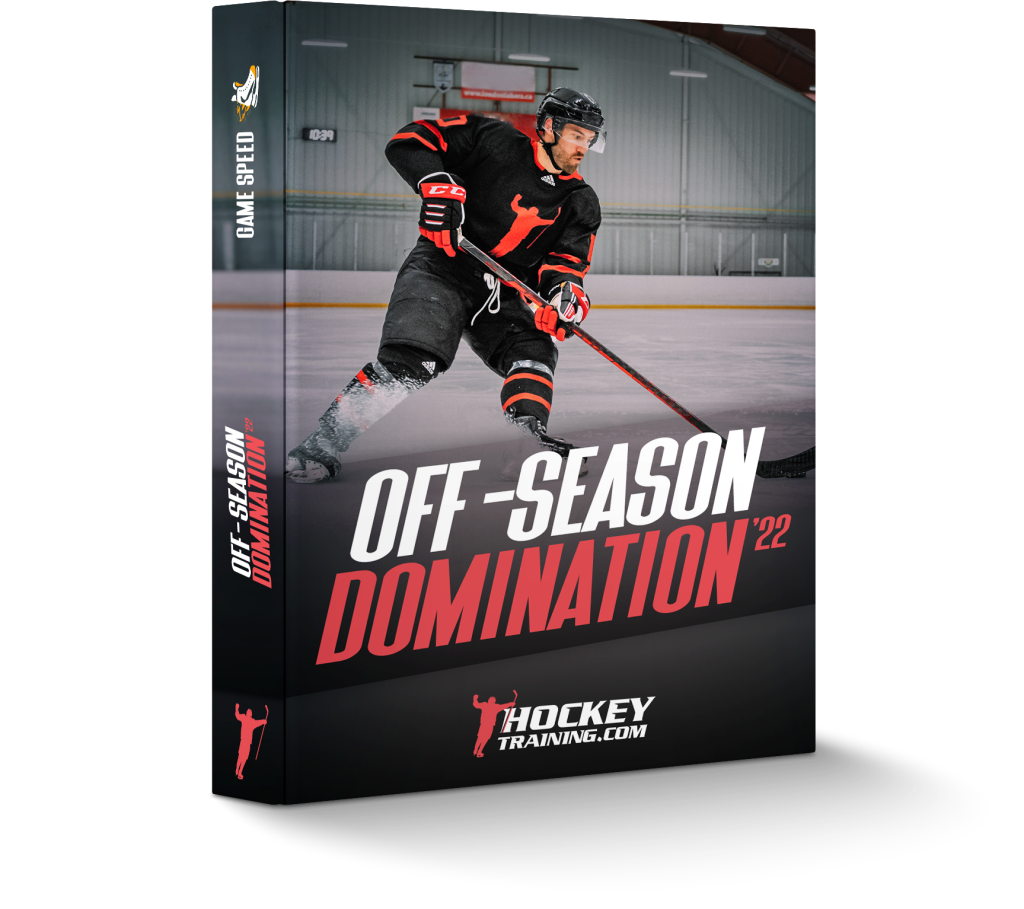Do you know what’s holding back your explosive speed?
If you said:
- I don’t have enough power,
- I’m not strong enough, or
- I don’t have good mobility
You would be decently close to the right answer, because all of these components matter. However, at a cellular level, none of these are what separate the most explosive skaters from everyone else.
I’m sure you know hockey players who have elite strength and power in the gym but still can’t effortlessly skate on the ice like some players who possess only half their level of strength.
Look, I’m going to be straight with you: the one undeniable scientific reality that all the most explosive skaters have in common is that they have tapped into their maximum force production potential by harnessing the power of releasing the brakes from a network of tissues known as the Golgi tendon organ (GTO).
You can think about the GTO like tying an anchor around your waist during every shift you have on the ice.
Exercise scientists used to think explosive speed was a genetic gift only given to a select few, but what we know now is that every single hockey player has the innate power to develop explosive speed once they cut the rope of the anchor that’s holding them back.
The strategy you’re going to discover today is my pre-workout Performance Activation Potentiator (PAP) routines. You’ll learn how they effectively remove the nervous system block that’s preventing you from reaching your hockey potential.
The GTO is Your “Hockey Block”
The GTO is an extremely sophisticated system that acts as a protective mechanism within your muscle system.
More specifically, it acts upon muscular tension variations.
GTOs sense alteration in muscular tension, and when your muscles are exposed to extreme levels of tension (such as explosive starting speed and first step quickness), they automatically work to begin inhibiting the speed at which you are able to move.
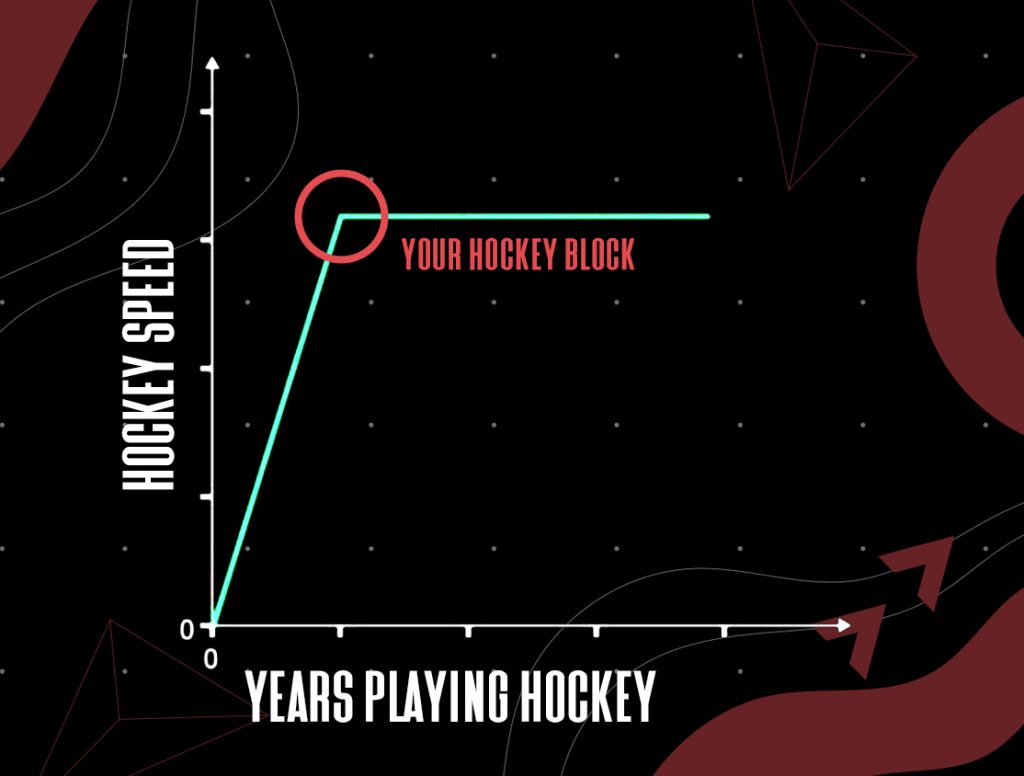
In the muscular “contract–relax” relationship, GTOs literally force your muscle to involuntarily relax. This is a protective mechanism the body has in place to protect you from getting injured or causing harm to local connective tissue.
This is exactly where “good genetics” comes into play, as the most explosive athletes in the world have naturally low GTO activity and will operate as explosively as possible—even if it’s at the risk of exposing themselves to a greater chance of injury.
However, with a proper program design, you can utilize a special technique to downregulate GTO activity and activate the muscles even more, all without putting yourself at a greater risk of injury.
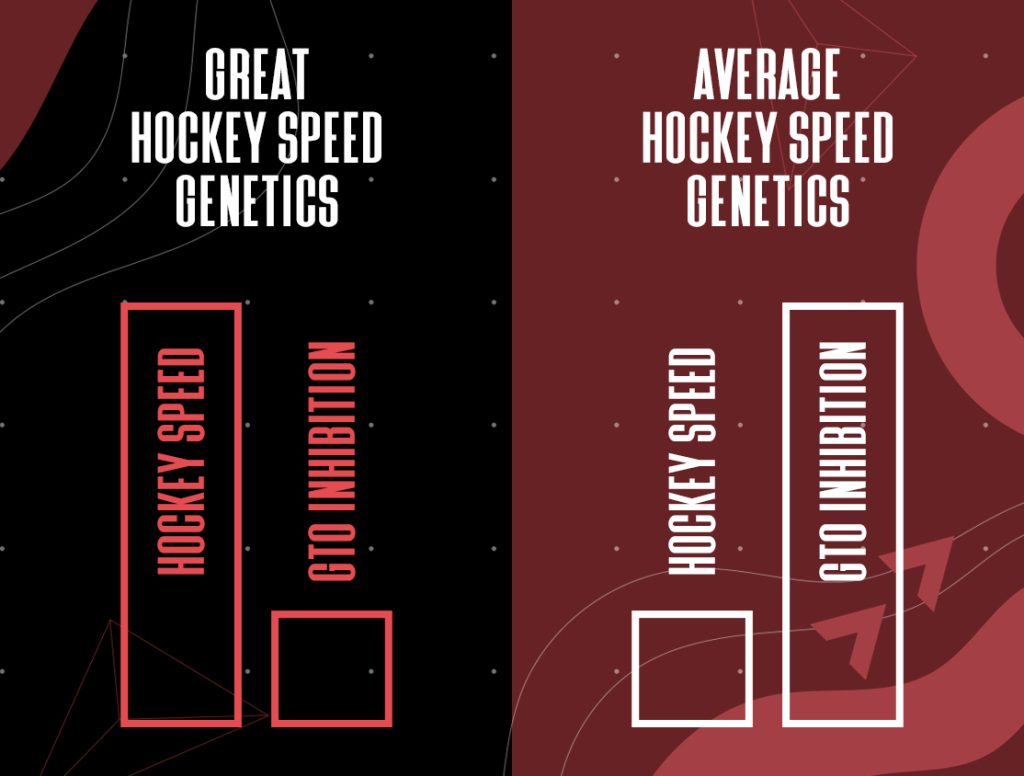
This is exactly where my PAP routines come into play.
The best part is that PAP routines can be used by any hockey player regardless of their genetics, age, gender, or current hockey skills to become a more dominant and explosive skater.
Explosive Skating in Four Simple, Science-Based Steps
What makes my PAP routines so effective is that they limit the GTOs ability to hold you back, but they also target the four neuromuscular steps responsible for increasing your maximum force potential.
To save this from turning into a textbook entry, I’ve simplified it below.
Step #1: Boost Your Stretch Reflex
The stretch reflex is when your muscle contracts in response to being stretched.
The GTO decreases muscular potential if it senses too much force production, but the stretch reflex is an opposing mechanism that drives maximal contraction when a muscle is being lengthened.
Oddly enough, the stretch reflex plays a preventative injury role as well, as it is forcing you to maximally contract a lengthening muscle so that it doesn’t become too lengthened and cause harm.
If you want to skate faster, you need to have a periodization scheme that decreases the GTO function while increasing the recruitment activation of muscle fibers. Both of these mechanisms combined make up the stretch reflex.
Step #2: Accelerate the Stretch Shortening Cycle
The stretch shortening cycle refers to the muscle action when active muscle lengthening is immediately followed by active muscle shortening.
This combination of rapid eccentric and concentric muscle contractions is very much why plyometric training is so effective. It accelerates the rate at which you can accomplish this cycle and therefore improves explosive speed and agility.
You can think about this phase like a rubber band. When your muscles lengthen, they develop energy potential and this energy is released when the muscle is forced to shorten.
Your skating stride is a sequence of lengthening, building-up, and releasing energy.
To optimize this, we reduce GTO activity (step 1) and accelerate the stretch shortening cycle (step 2) and then integrate that with step 3.
Step #3: Maximize Motor Recruitment
The combination of an individual motor neuron and all the muscle fibers it activates is called a motor unit. Additionally, the number of fibers it activates is known as the innervation ratio.
Put simply, groups of motor units work together to receive signals from the brain to coordinate the contractions of a single muscle.
Motor unit recruitment, which is the prime goal of this step, is a measure of how many motor neurons are activated in a particular muscle, and therefore is a predictive measure of how many muscle fibers can be simultaneously activated.
The higher the recruitment potential, the more explosive the contraction will be.
Interestingly, scientists have tried many ways to enhance motor unit recruitment, and one of the best ways to accomplish this is through strengthening the isometric contraction of the joint angle you need better recruitment in.
This is what the Movement Optimization Protocols I created are for, but everything is tied together for PAP periodization with step 4.
Step #4: Speed Up Your Rate of Force Development
The final step of developing explosive speed through PAP protocol design is by speeding up the rate at which you are able to generate muscular force.
In sports science, this is measured by how fast your muscle fibers are recruited, activated, and synchronized to execute a movement.
The key to unlocking your rate of force development is to create as much force as possible at the very beginning of a movement (e.g. your skating stride) before the stretch shortening cycle kicks in and the GTOs potentially rob you of that elastic energy.
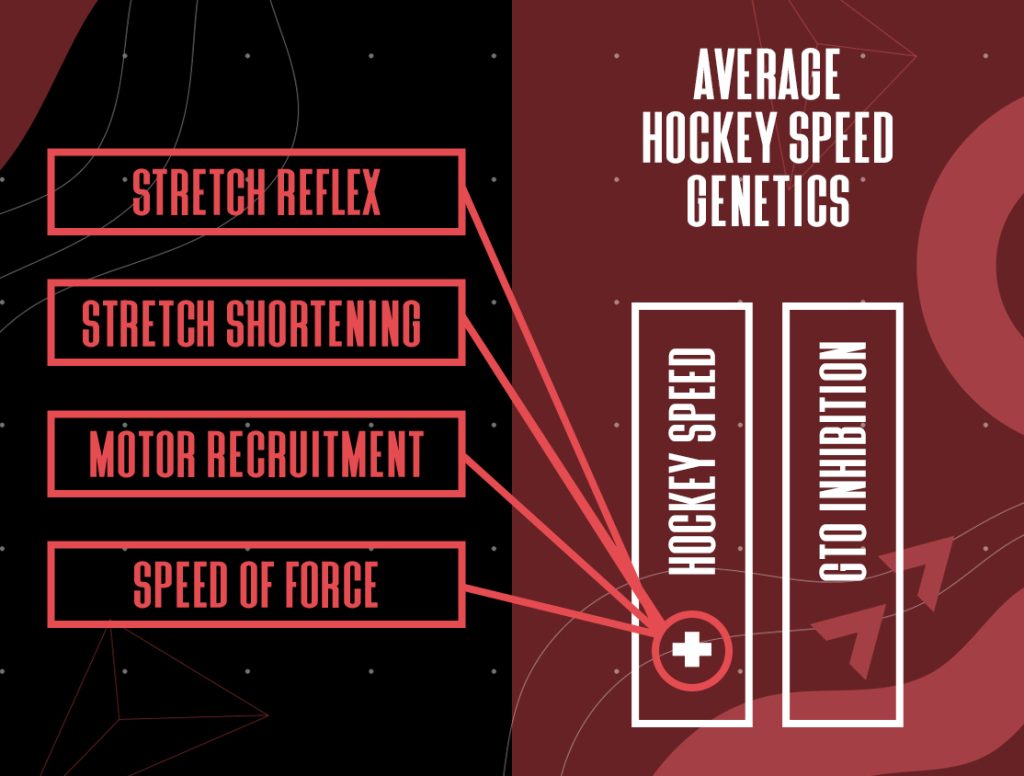
Performance Activation Potentiators: Your Key to Explosive Speed Development in the Off-Season
One of the primary factors I use to take hockey players’ performance to the next level through dryland training is to incorporate targeted PAP routines to accomplish all four of the above steps for explosive speed development.
It does exactly as stated: increases the potential at which you can perform in your workout through maximal activation of the nervous system.
Consider this: if a high-performance car has been sitting out in the freezing cold all night, would you press the pedal down to the floor straight away after waking up and turning it on?
Of course not.
For maximum performance and minimal breakdown, you want to properly warm it up and progressively rev the engine to a high RPM.
It’s the same with your physiology. You can’t just show up to your dryland training and expect maximum performance if you haven’t activated (revved up) your nervous system (engine) yet.
The PAP routines utilize pre-workout explosive movements all off-season long. For many athletes, using explosive high-velocity movements to excite the nervous system before training is an enormous plateau-buster all by itself, even if you don’t change anything else.
As a hockey player, you understand the important roles of speed and power in game-day performance. The more explosive you can train your nervous system to be, the more muscle fibers you will recruit and the more dominant you will be.
Using specific explosive movement patterns prior to your resistance training will prepare and teach your body to move at peak velocity and force outputs by inhibiting the GTO and maximizing the four steps of explosive speed development.
This effect in the scientific literature is known as postactivation potentiation and has been demonstrated to increase both strength and speed in subsequent movement patterns, leading to an all-around more productive workout and better overall gains from your hockey training program.
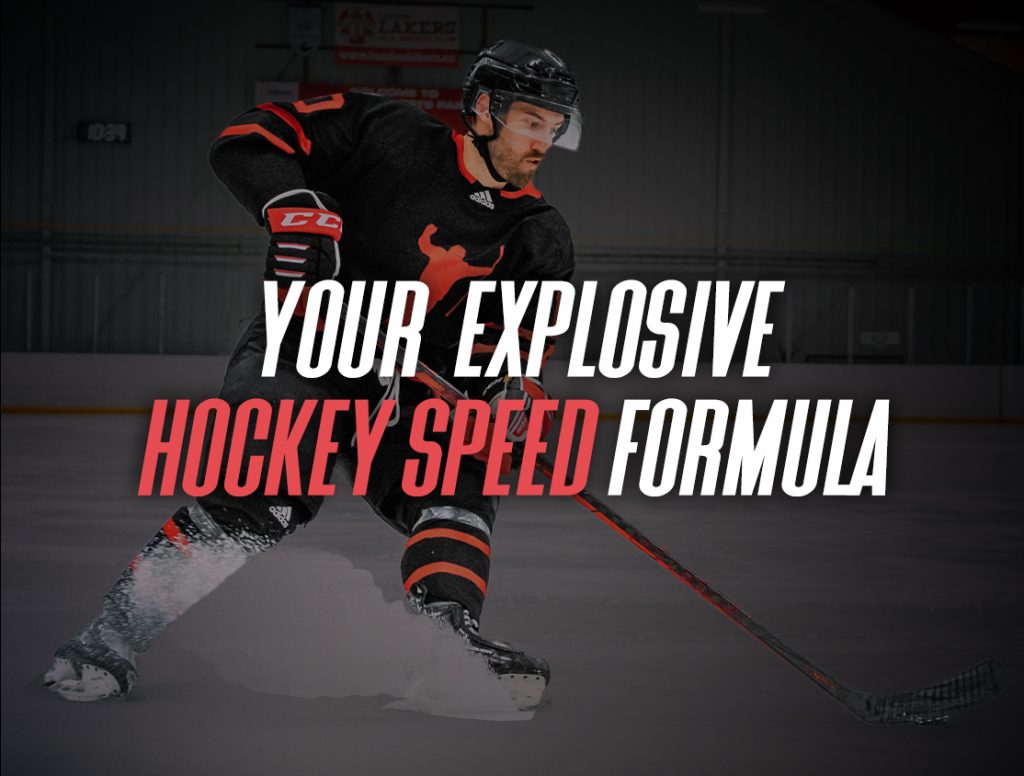
Structure and Design
I have the hockey players here at Hockey Training perform their PAP routine after their warm-up but before their workout.
This is the sweet spot, as you’re properly warmed up for your explosive PAP movements and then are fully activated by the time you begin the first working set of your workout.
I structure the off-season in six phases, but separate my PAP periodization into four blocks:
Block 1: Phase 1
Block 2: Phase 2 + 3
Block 3: Phase 4 + 5
Block 4: Phase 6
The choice of utilizing four blocks is not by coincidence; they are in place to emphasize and progress each of the four steps to develop explosive speed, as discussed above.
To ensure well-rounded structure and design for maximum athletic progression, I utilize two different PAP routines per block to ensure all power highways are covered. An overall sound structure could look like this:
PAP Template #1
Vertical Power
Horizontal Power
Upper Body Power
PAP Template #2
Lateral Power
Upper Body Power
Deceleration Movement
Keep the sets low (two to three sets per exercise) and the reps low (three to five is typical per movement pattern) as this is an “activation routine” and not designed to be the bulk of your workout. It is to be thought of as an explosive extension of your hockey-specific warm-up. Activate, don’t annihilate.
If you stay within these boundaries and properly implement progressive overload within each block, you will have the best off-season you have ever had this year.
Are You Ready?
I’ve made a transformation from being a hockey trainer to being a coach that’s turned his methods into an explosive speed factory.
Average athletes come in, are pushed through the production line, and emerge as a more confident, explosive, and dominant hockey player.
This off-season, you have the opportunity to feel that explosiveness for yourself.
My only question for you is: are you ready?
Most hockey players will tell you they want to achieve their hockey dreams, but deep down, they know they’re not willing to put in the effort required to become great.
They’re comfortable blaming their genetics and trying to piece together random articles and videos to make a free hockey training routine.
You can tell this by their actions too. Instead of working with a coach and leveraging their experience, they lie in bed on Instagram and engage with hockey marketing material rather than true hockey program design.
If you can relate to this, The Off-Season Domination ‘22 program isn’t right for you.
However, if you’re ready to tackle this off-season like a true professional and develop unstoppable speed and undeniable confidence, then the Off-Season Domination ‘22 system is the exact answer you have been looking for.
This is the most scientifically advanced off-season hockey program available. If you said “yes” to my readiness question, then I’ll see you on the inside.
Final Thoughts
Preparing for your dryland hockey workouts doesn’t take long. A well-executed five to seven minutes of hockey-specific movement patterns and performance potentiators will dramatically increase the result you can expect from your existing training program design.
The better you perform in your training, the better your results will be. The better your results are, the shorter the timeline between now and your hockey dreams.
Give your body and brain exactly what it needs to perform by joining the Off-Season Domination ‘22 system today.


